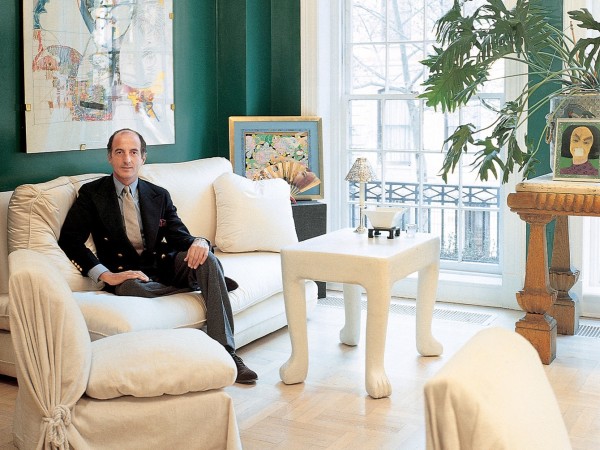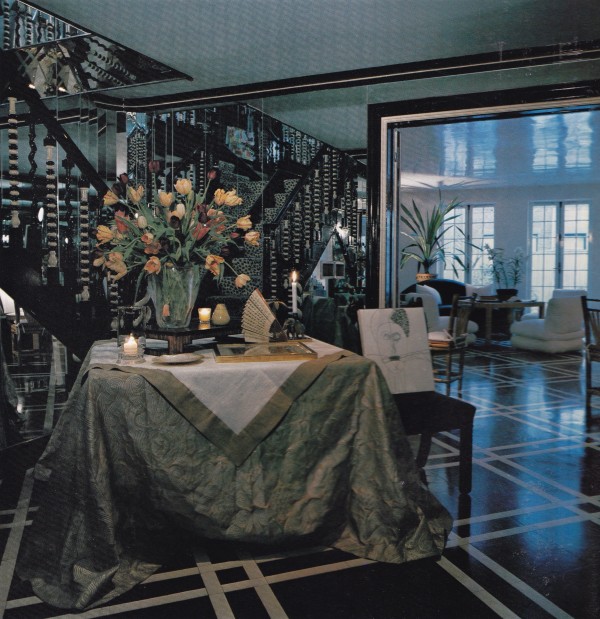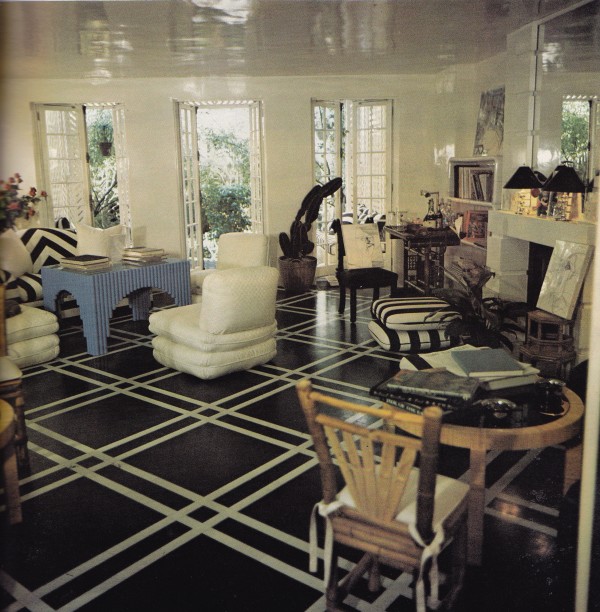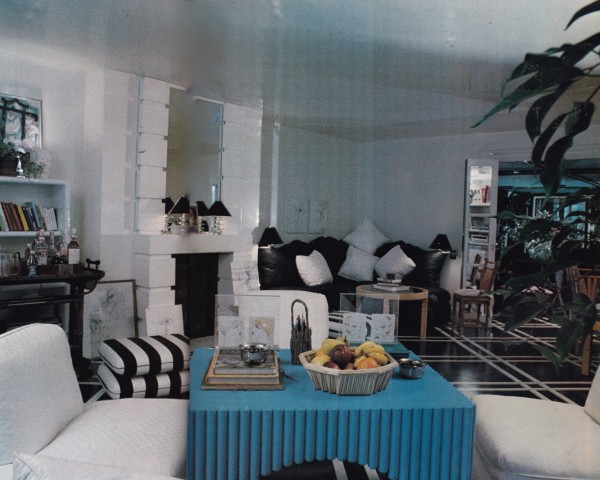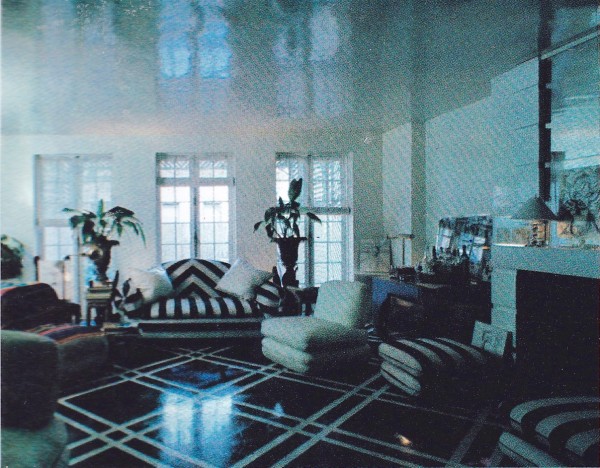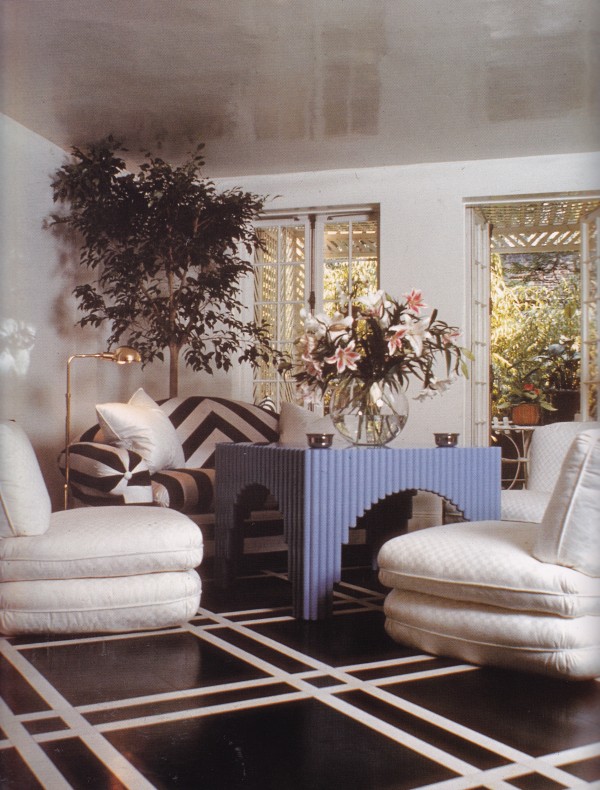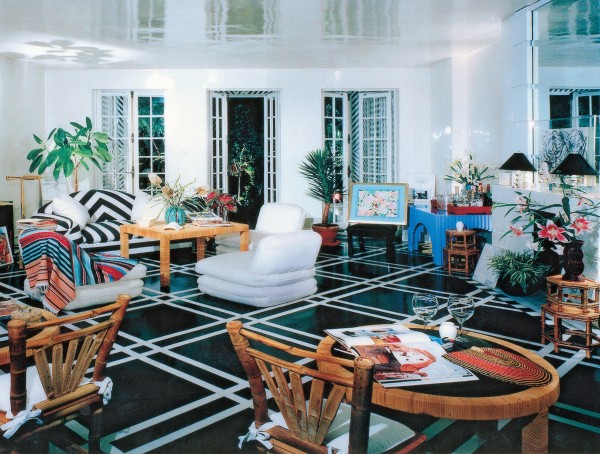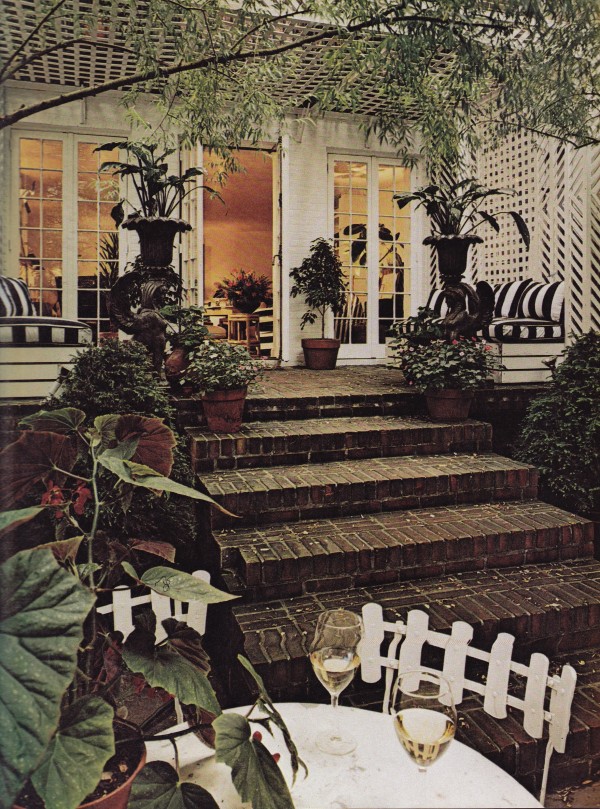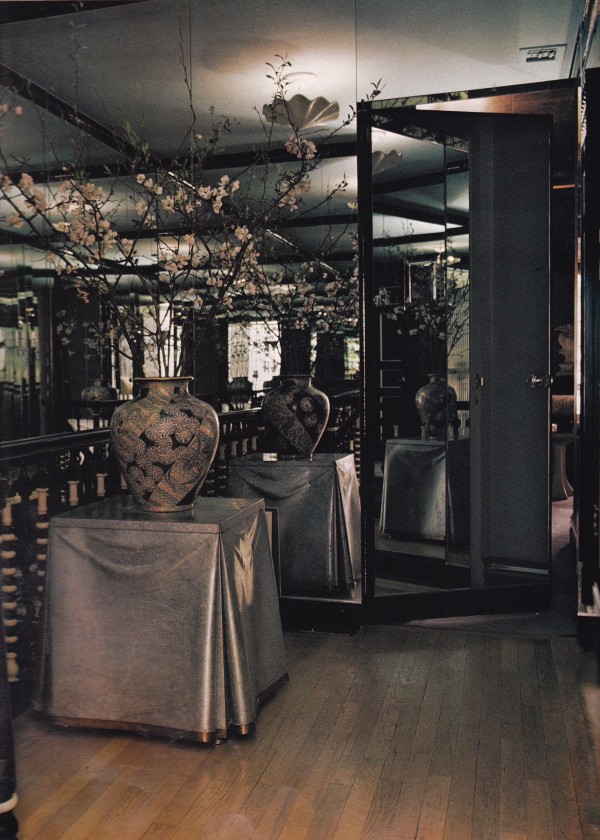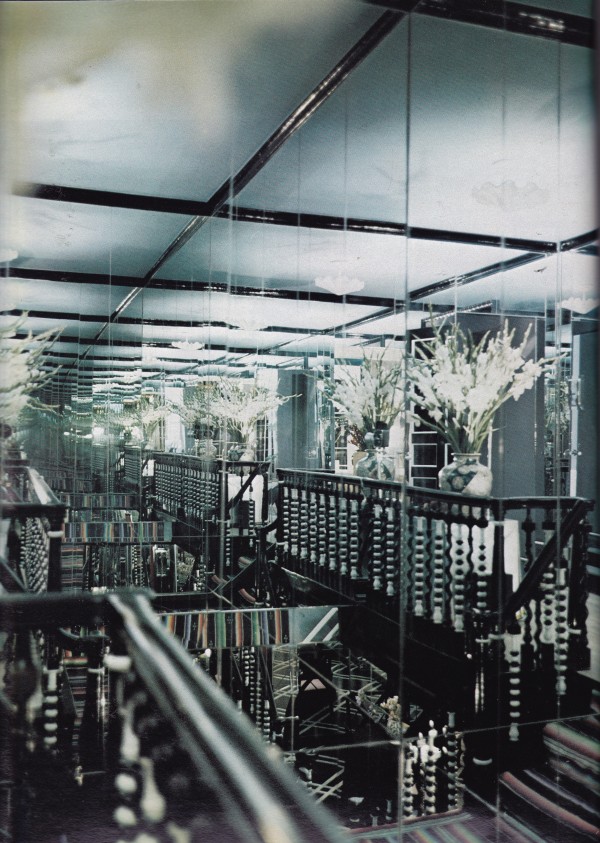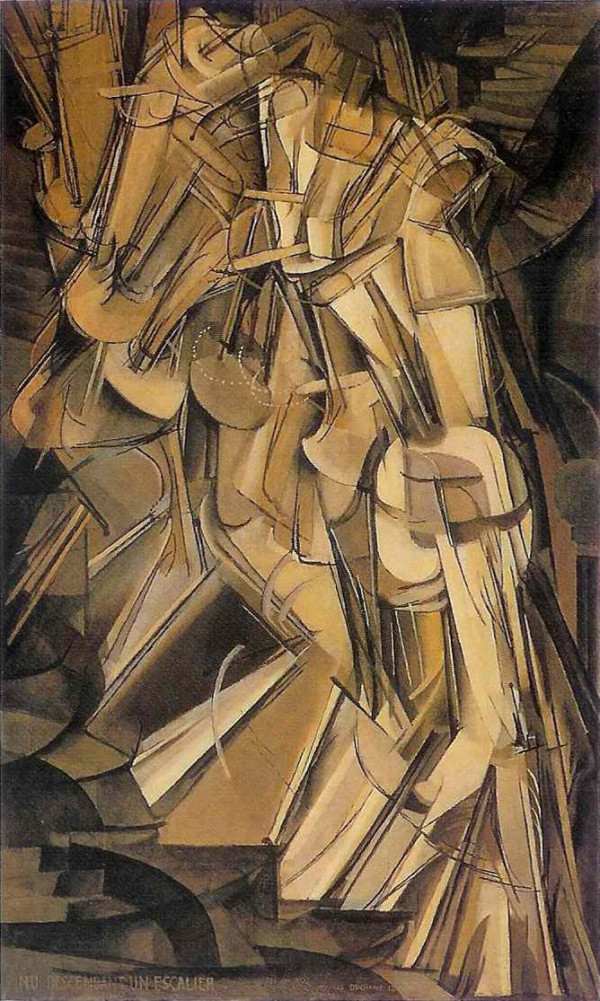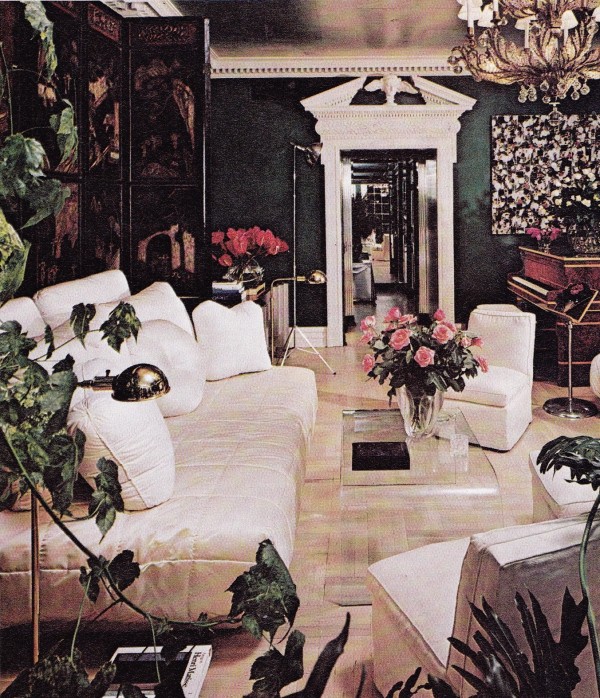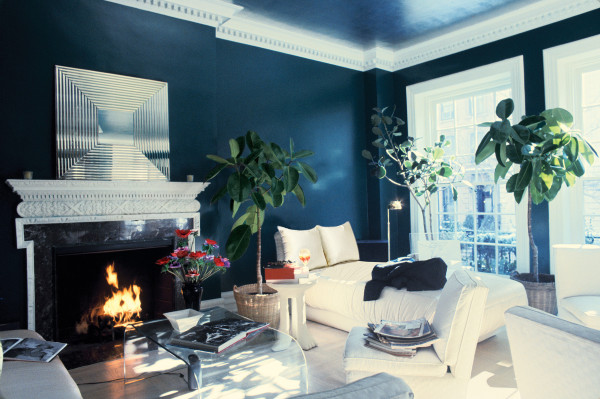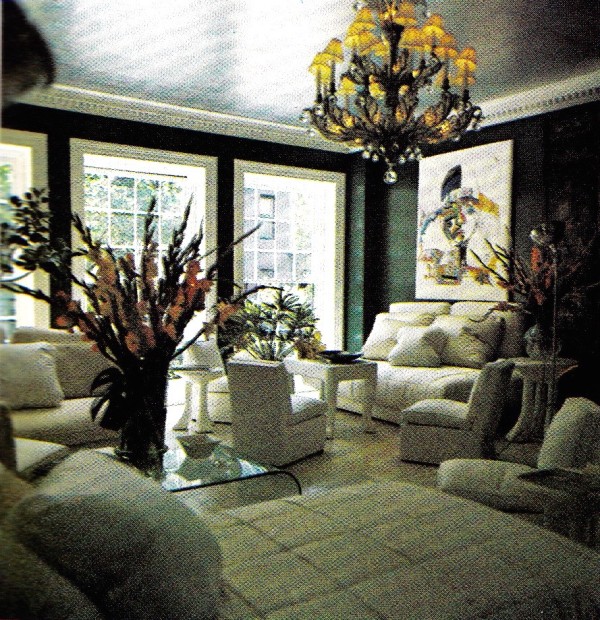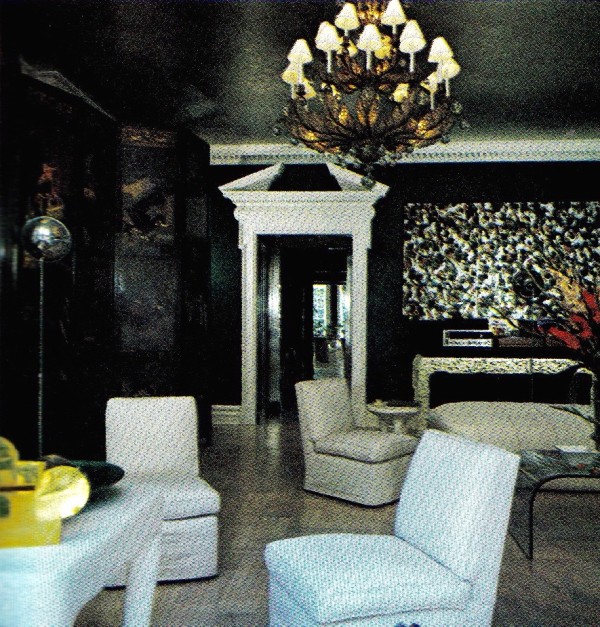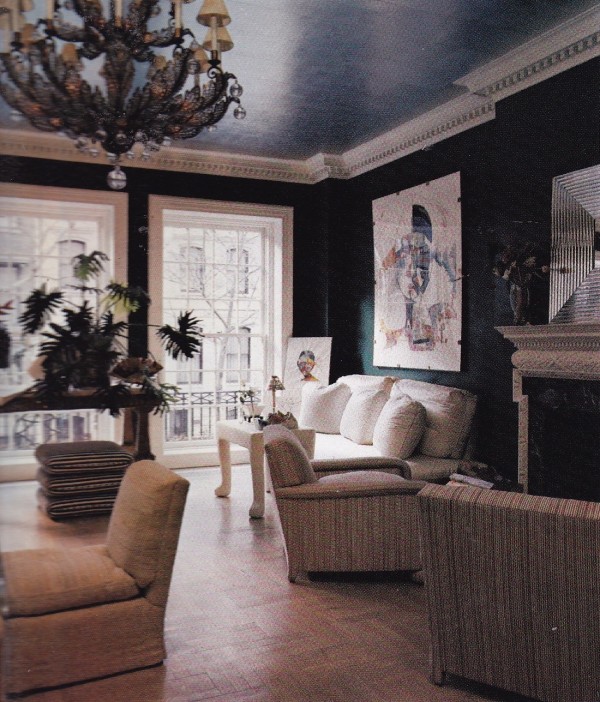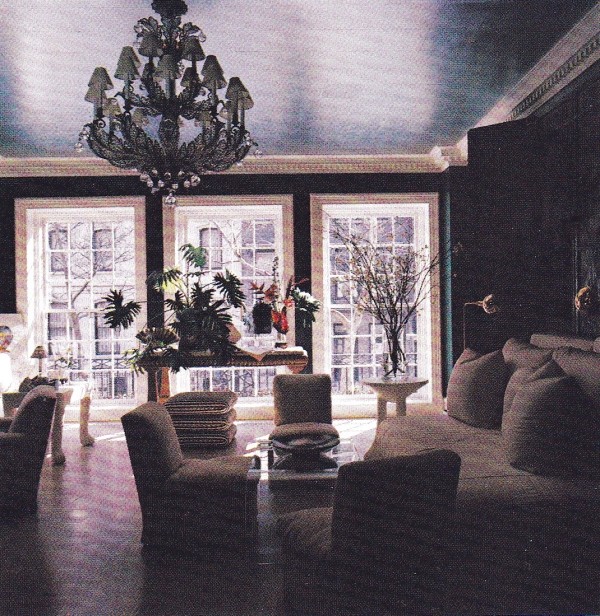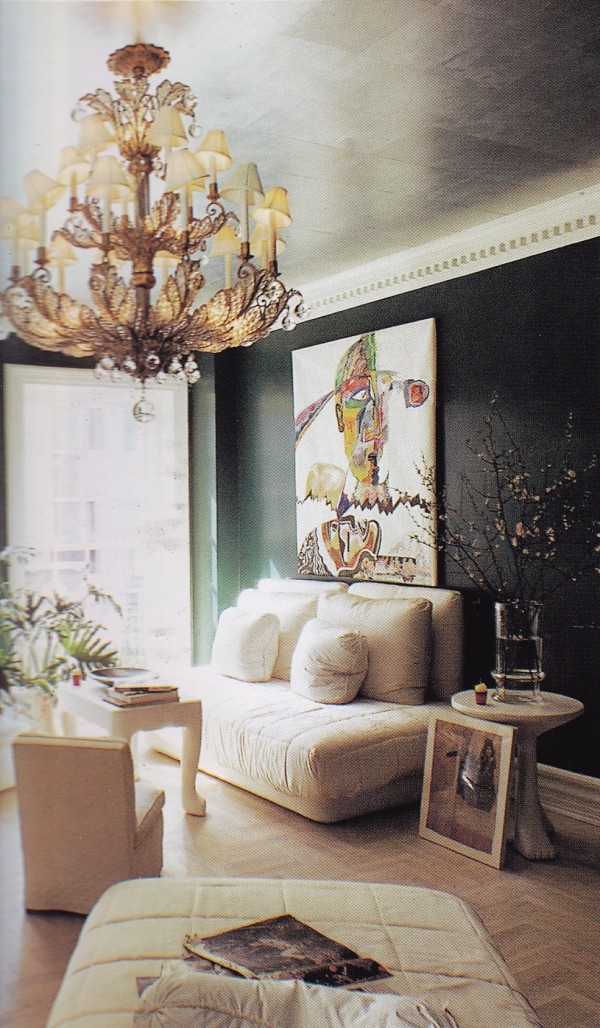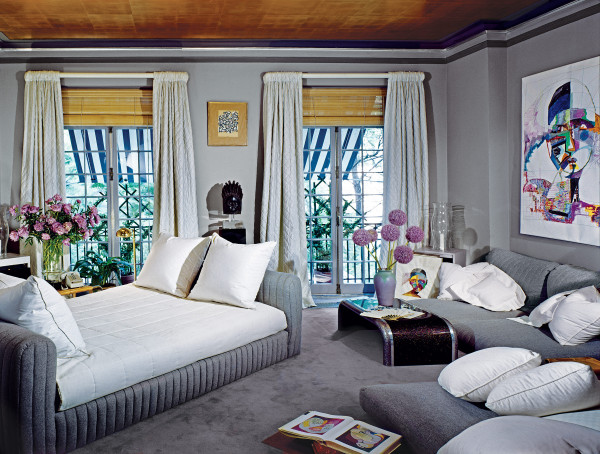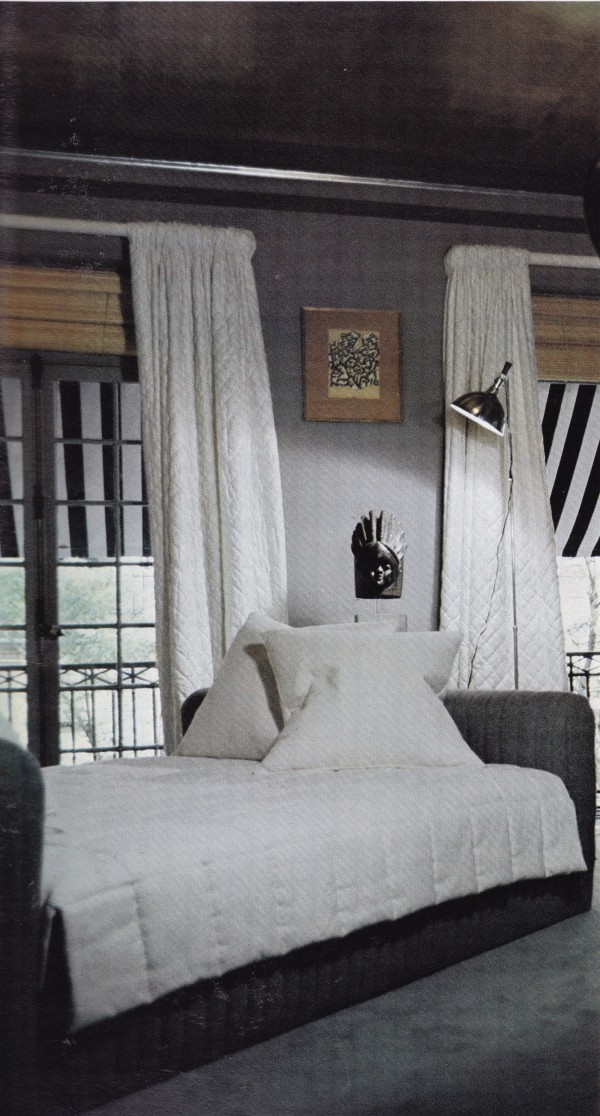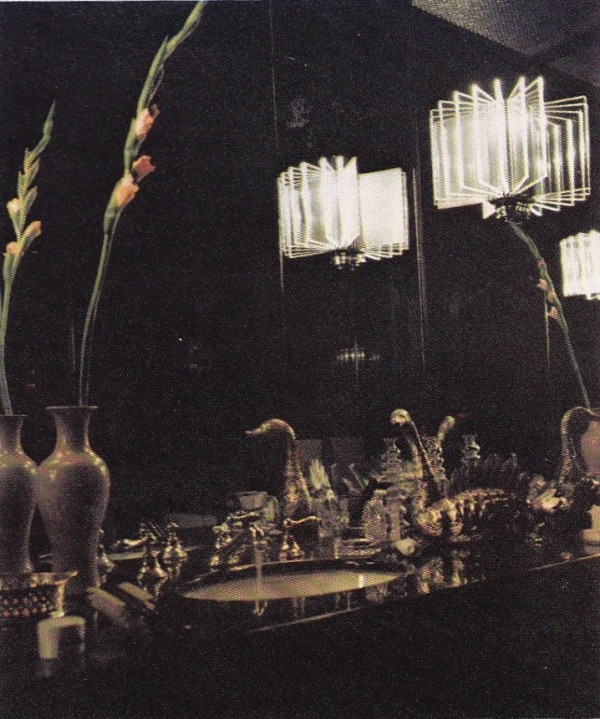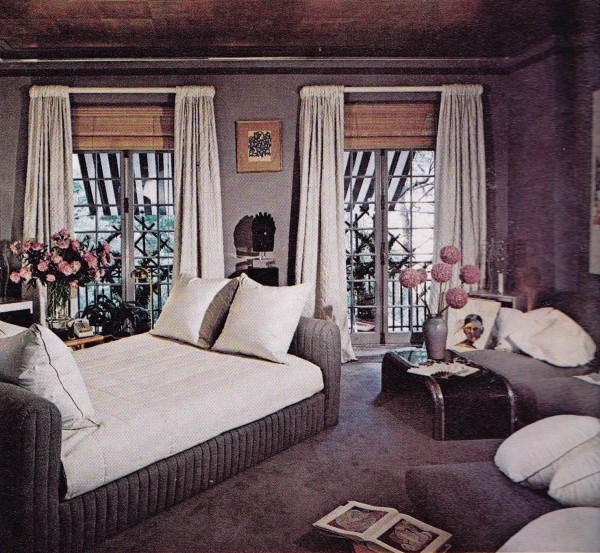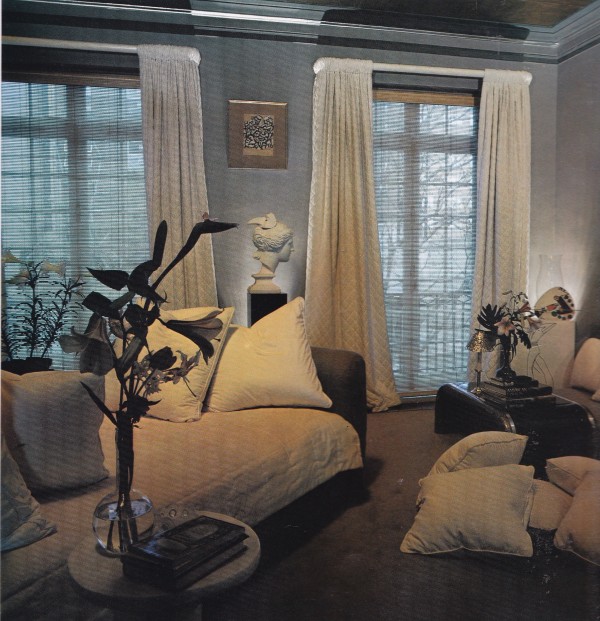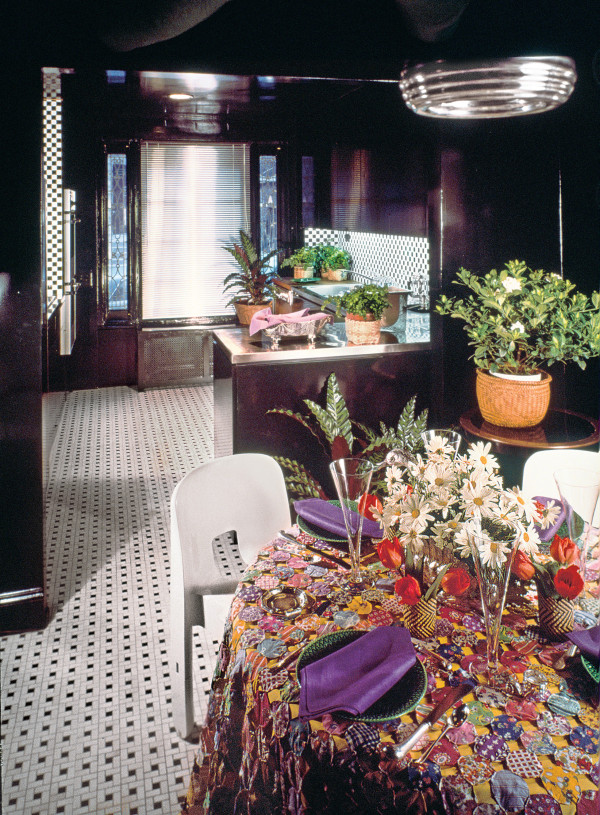“There are not very many creative designers in America, but Angelo is one of them.” — Halston
While Angelo Donghia may have been interior designer to the rich and famous he was, himself, no sybarite. Rather, he was a determined and hard working professional who happened to also appreciate the value of creating attractive and comfortable interiors that supported ones inner life. He created a new kind of luxury combining the classic with the modern, the high with the low, in his distinctive and refined minimalist decorative lexicon. Nowhere was his talent more on display than in his own New York City townhouse that he inhabited from the later 196o’s until his untimely passing at the age of 50 in 1985.
In my previous post, Angelo Donghia Retrospective, I briefly covered the designer’s career which is now the subject of a review on display at the New York School of Interior Design. Here we enter the designer’s personal world at that moment he had defined his mature style. Void of his previous taste for excessive luxury – pattern on pattern, balloony upholstery and surfaces teeming with collections – his new interiors, first featured in 1973, presented a quiet balm of sophistication. Donghia’s retreat from the noise of city living was sensual, calming, and luxurious, but tempered by the casual and, often, throw-away. The most striking aspect of his style, that I recall when first discovering his rooms many years ago, was his appreciation of the void. He didn’t feel compelled to fill every surface, allowing select pieces to breathe and take notice. It was essentially the beginning of large-scale furniture floating within, often, theatrical framed vignettes. A sense of discovery permeates Donghia’s rooms, filled with curious finds and unexpected combinations. While much of its decor is a mirror (pun intended) of the hedonistic era in which it was conceived, Donghia’s respite from the world was also approachable, enormously comfortable and witty. One of the most original designers of his time, his legacy lives on at Donghia Associates.
Mirrors in the downstairs entrance hall refract the black-and-white spindled staircase whose graphic punch is repeated in the door surround and geometric floor pattern. A table lavishly draped in metallic fabric displays Donghia’s affection for Asian arts. But, please, no more lacquered fans!
The garden room was where Donghia lived out daily life. In Angelo Donghia Retrospective I posted a photo of the garden room during an earlier period – a riot of color and pattern. The room later became more architectural, less boho and clubby, with an austere black-and-white scheme that introduced his plump furniture designs and the occasional burst of color in the form of a turquoise painted bamboo table, art, textiles and flowers. We are witness not only to his private domain but to his home as design laboratory, where art is mobile and casually propped, cushions are tossed on the floor, and curious objects are displayed for pleasure. The reflective high gloss of the white painted walls and graphic floor pattern is crisp and exacting, yet the overall atmosphere is relaxed and highly personal. From 1973, when the redecoration of the garden room first appeared in Architectural Digest, to the time just before his death in 1985, the room remained unchanged. Only a chair here or a table there were moved – a testament to the designer’s contribution to mobile furniture arrangements and a contemporary style of living.
The trellised upper terrace with built-in banquettes is just off the first floor garden room, extending the graphic black-and-white scheme found within.
The first floor mirrored entrance hall extended to the second level hall that introduced guests to the living room. Horizontal and vertical reflective planes created a dramatic affect that brings to mind the fractured quality of Marcel Duchamp’s Nude Descending a Staircase No. 2. John Dickinson’s iconic galvanized metal faux draped table holds a Japanese vase filled with quince blossoms.
Nude Descending a Staircase No. 2 painted by Marcel Duchamp, 1912.
Within a classical envelope of formal architecture, including a pedimented door surround and dentil moldings painted crisp white, relaxed and over-scaled Donghia-designed furniture floats within a cocoon of deep viridian on a pale bleached wood floor beneath a glittering silver papered ceiling in the main living room. A wonderful balance of high and low pervades the room, where a central seating arrangement is defined by an imposing Coromandel screen from the estate of Coco Chanel and upholstered furniture covered in white satin and cotton duck is placed with mobility in mind. Donghia understood the times in which he lived, creating glamorous, highly edited and sophisticated rooms that were equally youthful, modern and comfortable. He also introduced us to changeable arrangements where furniture, art, and objects can be moved easily from one place to another. While working on Mary Tyler Moore’s Manhattan aerie the actress fell so much in love with his beaded glass chandelier that installed it in her dining room (you can see it here). In 1977 his friend, film producer Joel Schumacher, lived here while doing the costumes and sets for Woody Allen’s Interiors, and while writing The Wiz for Sidney Lumet – using the banquette as his bed. If you have an opportunity you can view an interview with Schumacher and others at the Angelo Donghia retrospectivce, Angelo Donghia: Design Superstar, at the New York School of Interior Design.
Donghia used essentially only two colors, gray and white, in his bedroom. Gray wool suiting fabric was used on the walls, bed and banquette upholstery while quilted white fabric was used for curtains, the bed’s coverlet and pillows. Donghia often used this room for small dinner parties during the winter, pushing the bed aside to make space. With low, plump banquettes and a chaise on which to lounge beneath the golden sheen of the tea-papered ceiling a Bacchanalian atmosphere was assured.
SOURCES
Architectural Digest, November/December 1973, Jay Steffy photographer; The New York Times Book of Interior Design and Decoration by Norma Skurka, 1976, Jaime Ardelice photographer; Architectural Digest: American Interiors, 1978, Angelo Donghia photography; Manhattan Style by John Esten and Rose Bennett Gilbert, 1990, Angelo Donghia Associates photography.











